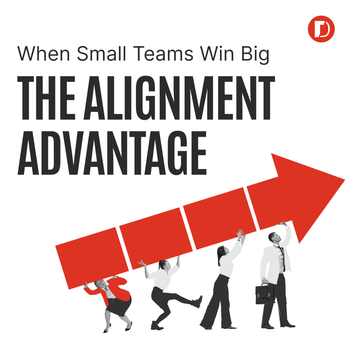Understanding Marketing Mix: How to Use the 4 P’s in an Online World
by Aden Andrus • September 23, 2019
The term “marketing mix” has been around since the Mad Men era of marketing and sales. The idea of “putting the right product, in the right place, at the right price, at the right time” has been a staple of marketing theory for decades.
But do these concepts still apply?
Back in the 1960s, the internet wasn’t really even a well-formed concept, let alone a key part of marketing and advertising. A lot has changed in the world and people are very different than they were six decades ago, right?
To answer that question, let’s take a step back from all the talk about marketing channels and tactics. Instead, let’s take an in-depth look at the ideas behind the term “marketing mix” and see what role the 4 P’s have to play in today’s world of online marketing.
What Does “Marketing Mix” Mean?
The term “marketing mix” was originally inspired by James Culliton, who described the marketing manager as a “mixer of ingredients” back in the 1940s. But, the term didn’t really catch on until Neil Borden published an article titled “The Concept of the Marketing Mix” in 1964.
In his article, Borden talked about all kinds of ingredients that go into a good marketing strategy: product, planning, price, branding, distribution, display, packaging, advertising, promotions, personal selling, etc. However, while his ideas were solid, they were a little hard to keep track of.
So, as marketers are wont to do, E. Jerome McCarthy eventually clustered all of these ingredients into four easy-to-remember categories: the 4 P’s of marketing.
We’ll get into the 4 P’s of marketing in a second, but let’s get back to marketing mix for now. To put it simply, “marketing mix” is a term marketers use to describe how the 4 P’s of marketing—product, price, promotion and place—should be mixed together to create an effective marketing strategy.
The specific mix will vary from company-to-company, but the underlying principle is the same: if your marketing mix doesn’t include the right ratios of all 4 P’s, your business won’t go very far.
The Four P’s of Marketing
So what are these all-important 4 P’s? How do they play into your marketing strategy? And do they still apply today?
While the exact number of P’s has waxed and waned over the years, the idea behind the 4 P’s is fairly simple. If you know how you’re going to handle each P, you should be able to put together a functional marketing strategy.
With all that in mind, let’s take a look at each of these P’s and see if and how they apply to online marketing.
Product
All marketing starts with the product you’re trying to sell. Of course, this doesn’t just apply to retail sales. Here, product can mean anything you’re trying to sell, from physical products to services to software.
The point is, you need to have a product that solves a problem for your customers.
Once you feel confident in your product and your target market, you need to figure out how to effectively communicate your unique selling proposition to your customers. It’s not enough to simply have a good product. To be successful at marketing, you have to be able to convince your customers that you have a good product—one that they want to buy.
These principles are as true today as they were sixty years ago. Bad products—or poorly understood and marketed products—won’t sell well…at least, not for very long. That’s true whether you’re marketing online or on a street corner.
The challenge with online marketing is that your product must compete with a much larger market than products historically had to deal with. In the past, if you were the only cabinet-maker in town, you were the only option. Today, people can find all sorts of alternative products to meet their needs, so your product really needs to shine for your business to succeed.
Price
Price is as simple as it sounds. If your product is priced well, people will be more likely to buy it. If it’s priced poorly—or people don’t properly understand the value of the product—people won’t be likely to buy.
Unfortunately, there are a lot of factors that go into determining the right price point for your product. First off, there’s perceived value. As mentioned above, people need to believe that your product is worth as much (or more) than they are paying.
Take Apple products, for example. From a strictly technical standpoint, you can get a laptop that performs as well as a high-end MacBook for a much lower price. However, Apple has managed to associate a lot of non-technical value with their products (the Apple ecosystem, fashionability, ease-of-use, etc), so their customers feel good about paying a lot more for an Apple product than they would for any other type of computer.
In addition to perceived value, you have things like cost-of-goods, distribution fees, overhead costs and more that directly affect your price point decisions. To effectively sell your product, you have to find a way to balance the perceived value of your product with the actual costs of selling that product.
Pricing is even more important in the era of online marketing. Thanks to the internet, people can often find similar products or services at a variety of price points, so it’s critical to identify a price point that makes sense for your customers. Otherwise, they’ll buy from a competitor instead.
Promotion
Promotion is the P that most businesses tend to focus on. Promotion covers all of the marketing channels and techniques that you use to sell your products.
Today, marketers have more advertising options than ever before. In addition to conventional marketing channels like billboards, TV spots, PR marketing, direct mail, etc, there are tons of online marketing channels to consider (paid search, social media marketing, email marketing, influencer marketing, etc).
With all of these new channels, it’s more important than ever to identify the right promotion strategies for your business. While many businesses mistakenly believe that this means that they need to invest in as many promotion strategies as possible, the fact of the matter is that effective promotion is more about identifying the right marketing channels than about accessing all channels.
As a general rule, most markets are best accessed through specific channels. Millennial moms are most likely to respond to Facebook and Instagram advertising. Retired grandparents, on the other hand, may respond better to direct mail ads. The trick is to identify the right marketing channels for your business and then make the most of those channels.
Place
These days, when most marketers hear the words “place” or “placement”, they tend to think of online ad placements. In display advertising, Facebook advertising and even paid search advertising, businesses constantly fight for ad placement.
However, that’s not what this P actually refers to.
Instead, place refers to distribution or how your product will be provided to your customer. Of all the P’s, this is the one that has been most changed by the internet.
In the past, distribution networks were at the heart of most successful businesses. People primarily made purchases from brick-and-mortar stores or paid locals for services. Now, however, people buy many goods and services from locations they may never visit in person.
This is important, because how people get your product plays a major role in how you market it. If your business ships good worldwide or offers services across the nation, local marketing really isn’t an option. In contrast, because people are exposed to so much non-local advertising, an effective local advertising strategy can be remarkably effective for local businesses.
Where the Marketing Mix Breaks Down
Now that we’ve talked about the 4 P’s and how they apply to online marketing, it’s time to talk about some of the challenges online marketers face that their 60’s counterparts never had to deal with.
Services Marketing
While the 4 P marketing mix model can be used for services, it was primarily designed for marketing goods. This gets even more complicated when those services are offered online, where customers might never directly interact with their service provider.
This creates an issue of trust.
Online, it’s fairly easy to fake things that you could never pull off in person. An ugly, middle-aged sexual predator can pretend to be a cute high-school boy and an “American” marketing agency can be an Indian company in disguise.
There’s often no way to know how qualified or trustworthy a services provider is, which makes many customers wary of online services. To account for these challenges, some people have proposed adding a few additional P’s to the marketing mix:
- Physical Evidence, or some sort of proof that a service was performed.
- People, or the employees who actually provide the service.
- Processes, or the methods and procedures your business uses to ensure that your services are provided in an effective way.
Whether you choose to incorporate these additional P’s into your marketing strategy, it’s important to keep these elements in mind as you develop your plan. If your customers don’t feel confident in your work, your people and your processes, they’ll have a much harder time signing up for your services.
Customer Focus
Another challenge that comes with online marketing is a lack of focus on the customer. Even before the internet took over the world, Robert F. Lauterborn argued that this was an inherent limitation of the 4P model. The model is simply too product-centered.
By distancing businesses from their actual customers, the internet has only made this worse.
As a company, it’s easy to get focused on your product(s), pricing, promotion strategies and distribution networks and forget about the customers that make it all work. This can lead to decisions that look good on paper, but don’t pan out in the real world.
In a brick-and-mortar store, you have daily interaction with your customers to help offset this problem. Online, however, marketers and business owners may rarely—if ever—interact directly with customers. This isolation can make it very hard to understand your customers and their needs—a potentially fatal problem for businesses.
To counteract this problem, online marketers have to adopt a customer-first mindset. In other words, businesses must build their marketing strategies and tactics around their customers’ needs, rather than the other way around.
Promotion Fixation
Online marketing is so easy that many marketers get fixated on promotion…and almost ignore the rest of the P’s. This is a real problem, because an improperly balanced marketing mix leads to marketing failures.
As mentioned previously, no matter how good your promotion strategy is, if your product is poor or doesn’t meet a real marketing need, you won’t get very far. Similarly, it’s hard to effectively market an improperly priced product or one with a poor distribution strategy (I’m looking at you, dropshipping).
The point is, while the internet has made advertising to the world incredibly easy, if you don’t pay attention to all of the P’s, you’re only working with part of a marketing strategy. To succeed online or offline, you need a good marketing mix—not the latest marketing tactic.
Conclusion
So, does the term “marketing mix” still apply today? Absolutely…provided that you understand the 4 P’s and how to adapt them.
Although the ways we use product, price, promotion and place to sell products may be different than they were in Don Draper’s world, they will always be an important part of any good marketing strategy. The only question is, what is your marketing mix? Do you have the right blend of P’s for success?
If the answer is no, reach out to us here or in the comments! We’d love to help.
What do you think of the “marketing mix” approach? Does it work for you? Share your thoughts in the comments below.





